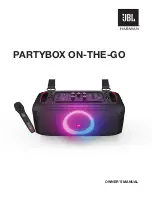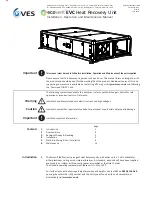
Introduction
Page 5
Users can also use a remote control to set or unset the system, or to
operate outputs (depending on how the system is configured).
The access code of the first master user is defined by the installer during
installation.
It is recommended that you change this user code as soon
as possible
after system installation (see page 37).
Code lockouts
If a user has problems remembering their code, or has acquired an
unrecognised proximity tag, they may try keying in their code or presenting
the tag several times. If this happens four times in a row, the control unit
locks all keypads for 90 seconds and starts an "Excess Keys" tamper
alarm. If configured, the control unit also sends the event to the Alarms
Receiving Centre (ARC).
Once 90 seconds has elapsed, the keypads allow users to try again. If an
incorrect code or tag is used again, the keypad locks them out for a further
90 seconds, and so on.
Installer access
The installer has their own access code to access the installer menu
options for system configuration. There is only one installer access code. It
cannot be used to set or unset the system or to access the user options.
Note:
The installer may be able to call into your control unit and program it
remotely (e.g. using the web interface). Depending on how your installer
has programmed the system, you may receive a phone call from the
installer to request access.
About part-setting and partitioned modes
Depending on your requirements, your system may have been configured
by the installer as a part-setting system or a partitioned system. These two
modes are explained next.
Part-setting mode
In part-setting mode, the control unit can set in one of four ways: either full
set or one of three part sets (part set B, C or D). Each zone can belong to
one or more part sets.
When the system is full set, the control unit sets all zones, irrespective of
the part set they belong to.










































